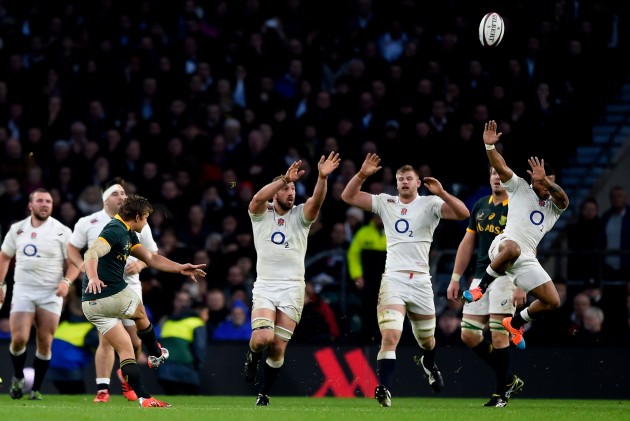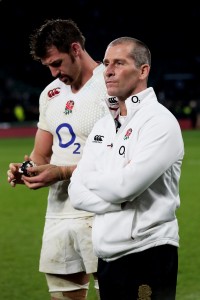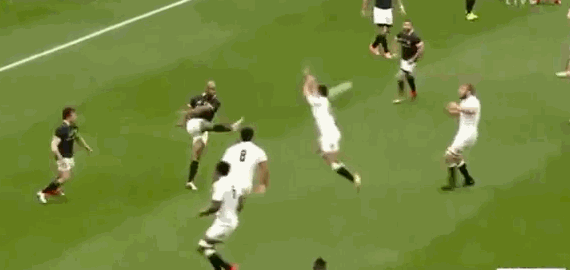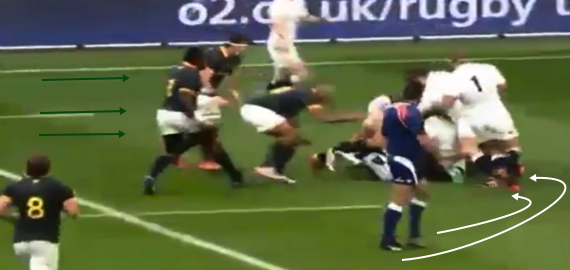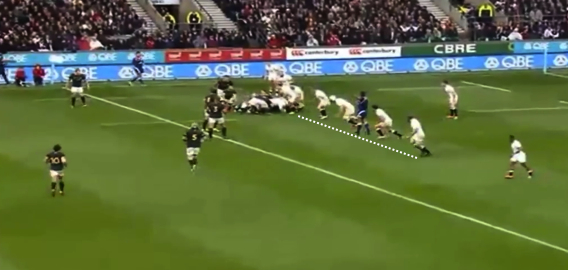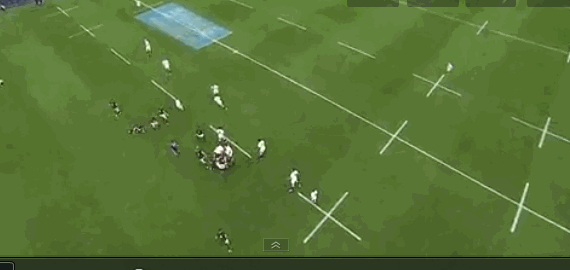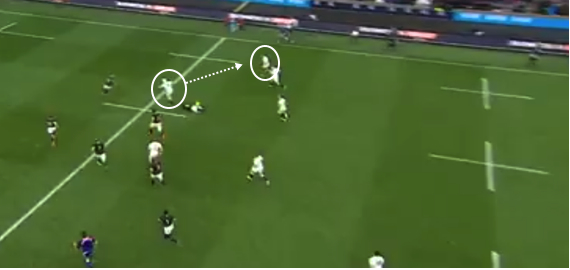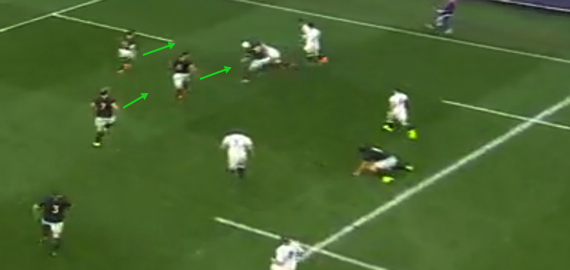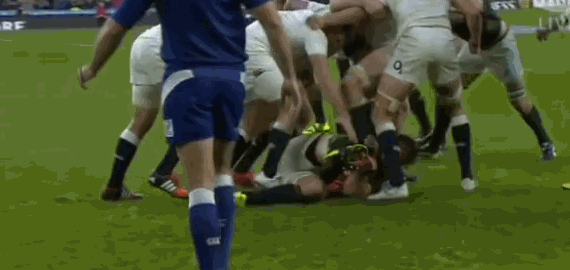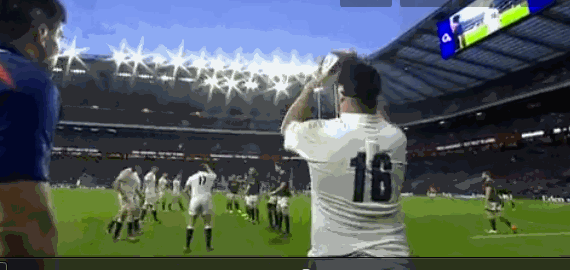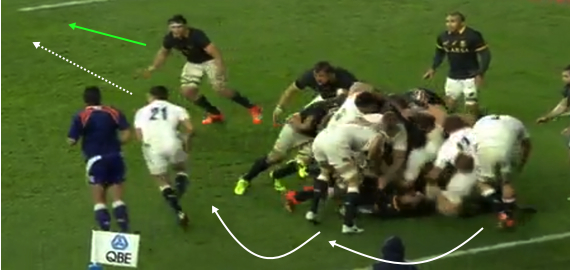Saturday's 31-28 defeat by South Africa was England's fifth consecutive Test loss. We analyse five moments in which the game slipped away from the hosts
“I BELIEVE in the players, I believe in the coaches and I believe in what we’re doing. But this hurts.” England coach Stuart Lancaster
The rain that greased the playing surface had long cleared by the final whistle of England‘s 31-28 reverse to South Africa. Still, Lancaster exited Twickenham into the November night under a dark cloud of frustration and angst.
Regardless of opposition and a sizeable injury list, five Test losses in succession is a grim place to be. Although Lancaster argued that there were some encouraging signs, namely a second-half resurgence and bright displays from a few young replacements, this was arguably just as galling as the 30-3 Cardiff capitulation in March 2013.
In the wake of a three-point defeat to the second best side on the planet that might seem overly damning. However, the disappointment comes because of England’s desired destination. They want to win the World Cup and have the potential to get very close. But elementary errors are causing matches to slip away.
Lancaster’s win rate has slipped to 56%. For reference, both Martin Johnson and Brian Ashton left the post on 55. The former school teacher has said he will not panic, and composure is exactly what is required. While everything is easier is hindsight, the biggest annoyance will be that it is fairly straightforward to pinpoint where England are lapsing. Here are five moments that helped clinch a Springbok victory…
England 0-0 South Africa, 9mins: Farrell runs into trouble
Before going any further, it should be said that Owen Farrell is an exacting competitor who will need no reminding of where he could have been better this weekend. On the contrary, the young Saracen will take full responsibility for his shortcomings, most of which are down to a glaring lack of game time this season.
This situation comes about initially from a selfless chase from Jan Serfontein and kicker JP Pietersen. They box in Farrell, who initially does well to free himself with a dummy to Mike Brown. Then the problems start. Rather than clearing on the run, he drops off to Anthony Watson and the Bath wing is enveloped by Springbok forwards on his maiden carry.
Looking closely at the contact area, we can see how South Africa affect the turnover:
Marcell Coetzee and Tendai Mtawarira are close by and can accelerate on the same path to add weight to the ruck, while England’s forwards must track back behind the hind foot, making it tough to drive past the ball. The visitors win possession and Chris Robshaw, desperate to rescue the situation, is over eager and goes offside:
Referee Steve Walsh gets the call from his touchjudge and it is the right one, allowing Pat Lambie to make it 3-0 to South Africa:
England 0-10 South Africa, 23mins: Attwood passes too late
Where the first pass Watson received sent him down a cul-de-sac, here he has a huge expanse of space but it is ignored. As we have seen over his short career, the 20-year-old possesses electric pace. It should be a priority to free him at every opportunity. Dave Attwood, a Bath team-mate, should know this all too well. The reverse angle highlights things:
This is a basic awareness error that blows a try and maintains England’s worrying habit of failing to be clinical. June’s All Blacks series was littered with examples. Freezing the instant Attwood outstrips Duane Vermeulen, you see how a five-metre pass will put Watson in:
Instead, Attwood holds on, only releasing an offload out of Bryan Habana‘s tackle. By that point, the Springbok scramble defence has rushed back to cover. The chance is gone:
England 20-20 South Africa, 52mins: Schalk swings pendulum
The key point, perhaps in the entire match, actually occurs just prior to this. Surging on the back of two second-half scores for David Wilson and Ben Morgan, England were rampant. With two minutes left on Victor Matfield’s sin-bin, Tom Wood burst upfield and linked up with Danny Care. Only Willie le Roux stood in the way of a try that would have snatched the lead and sent Twickenham into raptures.
As it was, le Roux managed to make a desperate tackle and South Africa eked out a penalty at the breakdown – an area in which they excelled all afternoon. They kicked for touch, forced another infringement and repeated. Without their lineout general, Eben Etzebeth stepped up as organiser and the pack executed with brutal efficiency to fire Schalk Burger over. As Care admitted afterwards, the hosts were hugely deflated.
England 20-25 South Africa, 60mins: Hartley’s yellow card
How about this for a mischievous, irrelevant but totally true statistic: South Africa have now been refereed by Steve Walsh in 18 Test matches. They have lost only one of them. This decision was undoubtedly pivotal, both given the state of the game and Dylan Hartley‘s importance as one of Robshaw‘s trusted lieutenants. In truth, the call is a contentious one and is made even murkier with a closer look at the contact made on Veremeulen:
Is the ‘stamp’ definitely on purpose? Many advocates of old school self-policing would say Vermeulen has earned some stud marks for obstructing the maul in any case. A slap is indicative of Hartley’s frustration with what he perceives to be an act of gamesmanship in slowing England’s progress.
One thing Walsh made absolutely clear, communicating during and after the incident, is that he believed Vermeulen to be ‘sacking’ the jumper, totally legal according to the laws:
Because Walsh is trying to clarify the matter by barking his interpretation to the players, it could be argued that the incident is more avoidable. Whether it was clumsy or callous – and I personally suspect the former – it cost England dear.
England 23-28 South Africa, 71mins: Late chance elapses
As if to re-emphasise the last point, England’s introduction of Rob Webber stunted their progress at the lineout somewhat. The driving maul did not function as destructively after Hartley’s departure and there was a stolen set-piece later on too.
Although this turnover looks like an elementary loss of control in the tackle area, it actually starts earlier with the lineout. A short throw concentrates England’s forwards around the five-metre line.
Burger’s role is subtle but vital for South Africa. He fights through the middle, which both preoccupies the likes of Courtney Lawes and persuades Ben Youngs to release the pass:
As Coetzee prepares to race into midfield, England’s two most free forwards are Wood and Wilson, who must detach themselves from the maul before setting off in support. By the time Brad Barritt has challenged the gain-line, the attacking side is understaffed and Youngs must hit the ruck to get rid of Coetzee:
Watson shows a tiny bit of inexperience by joining the breakdown as well, forgetting the unprotected ball. Conversely, demonstrating the know-how of a 100-cap veteran, Habana scoops up and averts the danger.
In games against both New Zealand and South Africa so far this autumn, England have now scored points on six out of 19 visits to the opposition 22. They know that is not good enough.
International rugby at the summit is about details. Lancaster’s men need to start getting more of them right if they have any aspirations of lifting the World Cup.
To read RW’s verdict on England’s midfield problem, check out the December issue of Rugby World – in shops now! Visit po.st/RWSub for all the latest Rugby World subscription deals, or find out how to download the digital edition of the magazine at po.st/RWDig.





